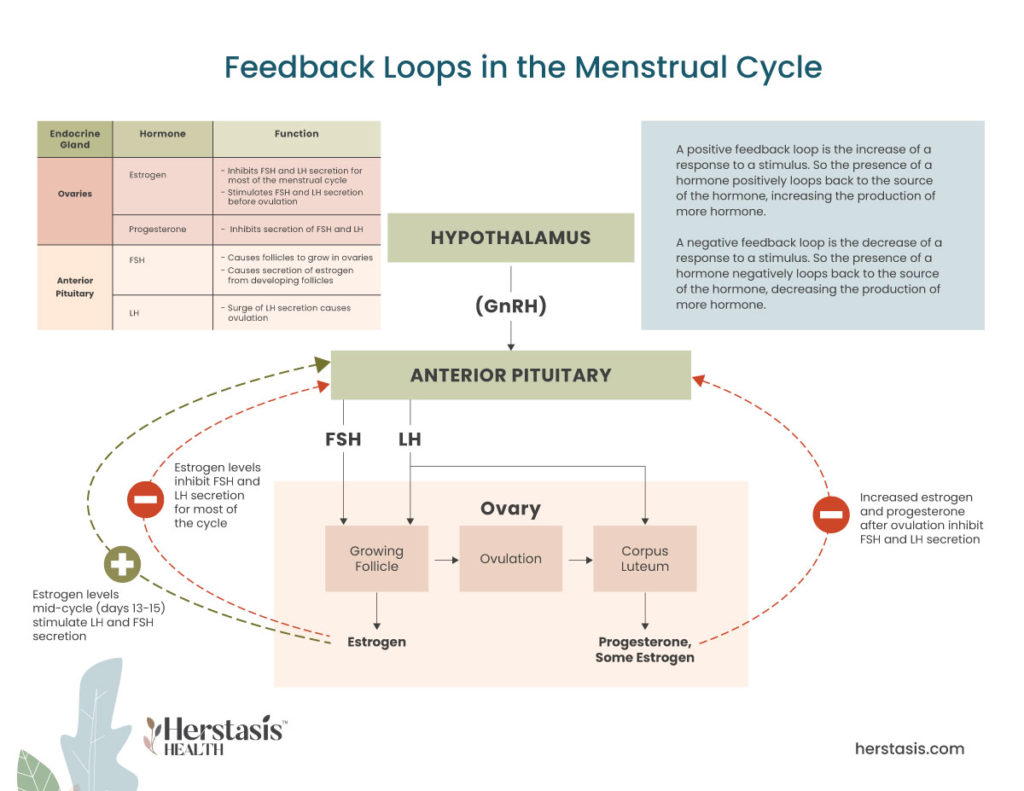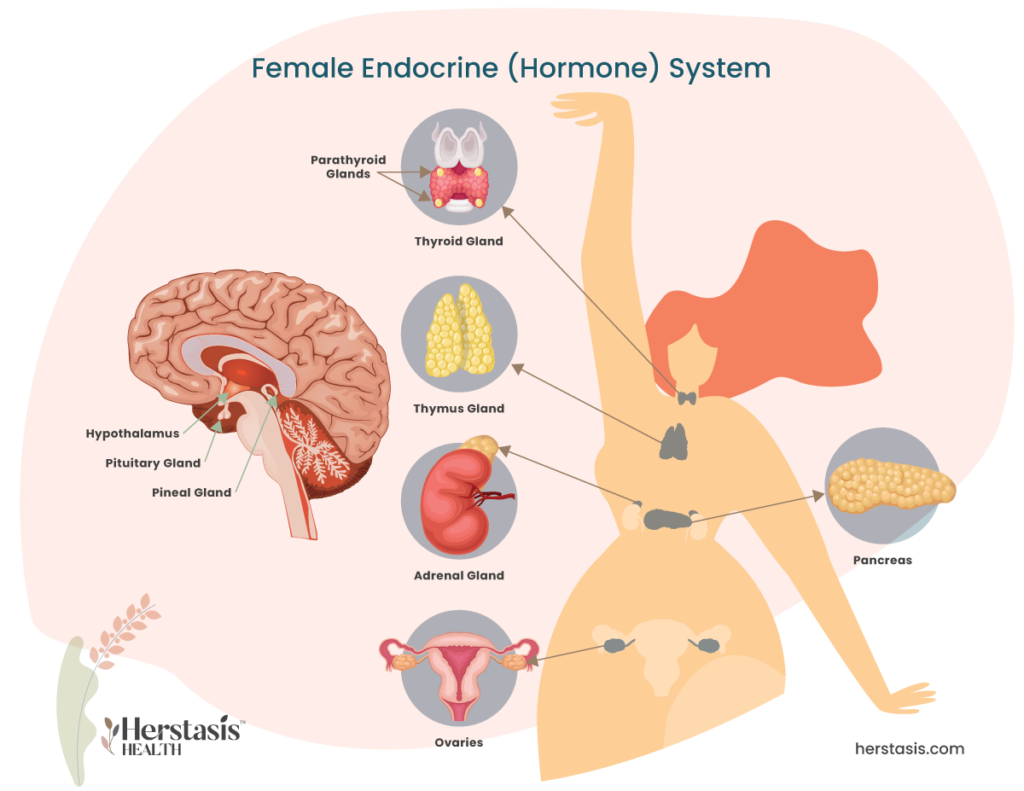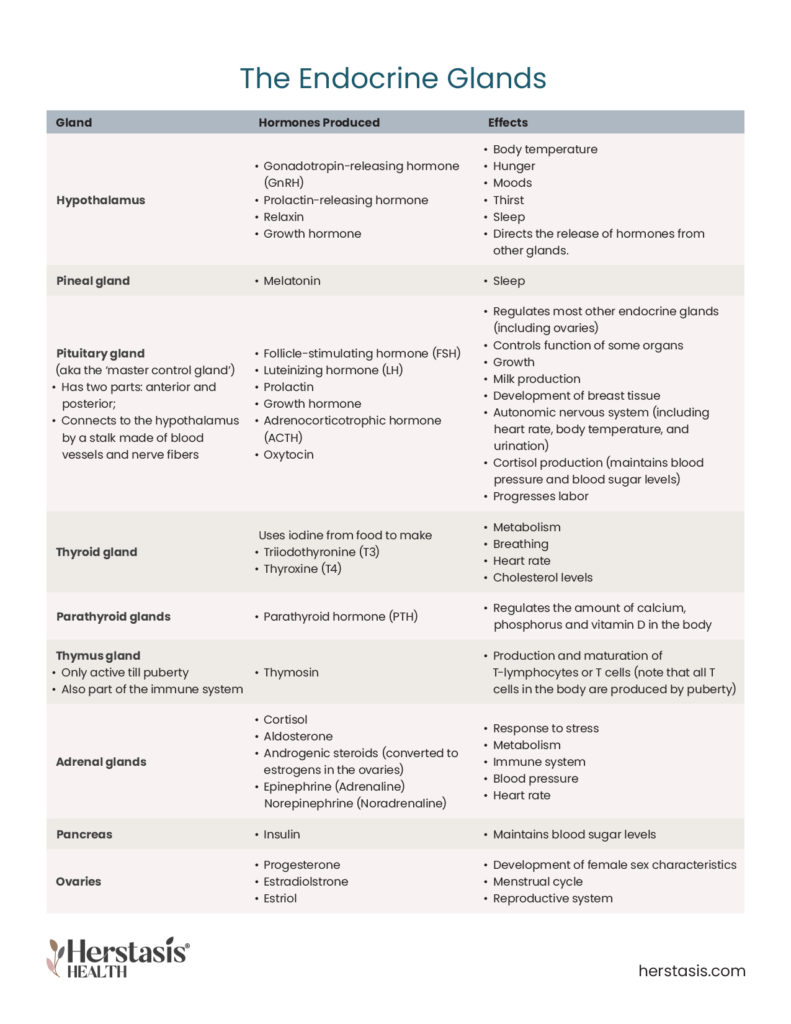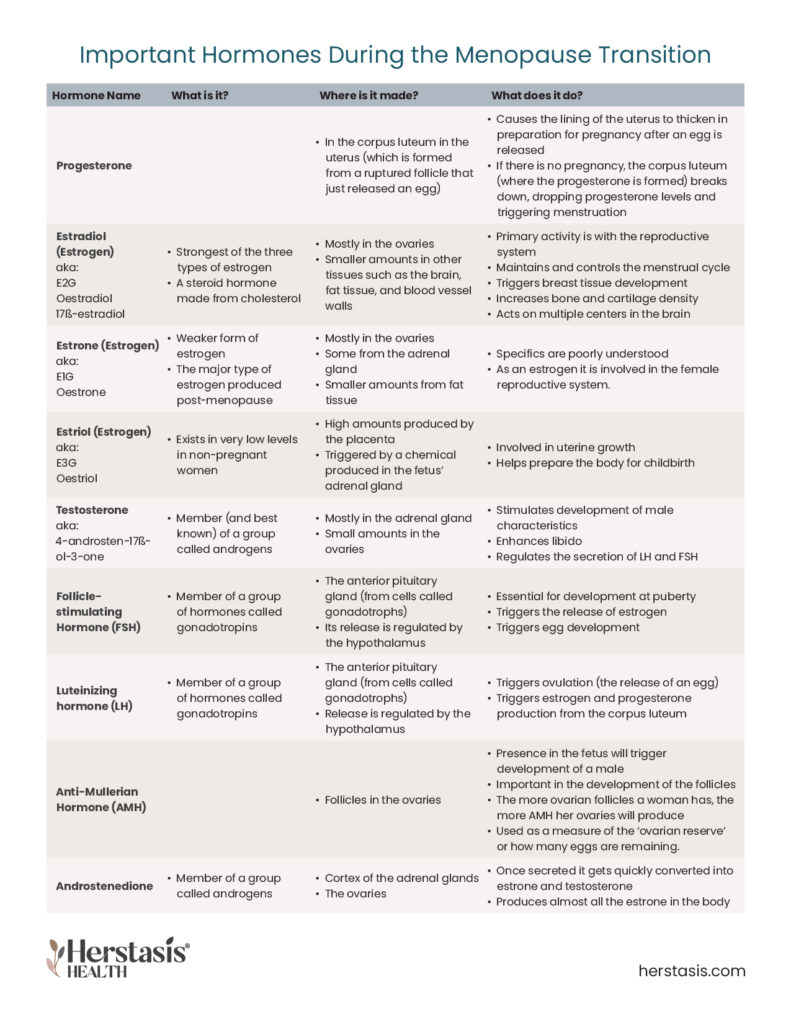Hormones
Hormones start working when a fertilized egg (you!) implants in your mother’s uterine wall and their activity won’t stop until the day you die.
So what are hormones and why do they exert such a powerful influence on our minds and bodies?
Hormones are chemical messengers that are made in one place in our body and released into the bloodstream to carry messages to other parts of the body. That might not sound like a big deal until you realize that hormone messages carry the instructions to do almost everything going on in your body including:
- Breathing
- Changing food into energy
- Reproduction
- Movement
- Sexual development
- Growth
- Emotions
- Much more!!

The Female Endocrine System
The endocrine system is the name given to the series of glands that produce hormones and secrete them into the bloodstream. The female endocrine system is shown in Figure 1.
How Hormones Work
At its most basic, the endocrine system works like this:
Gland → hormone → bloodstream → receiving/target cell → action
In other words, a gland produces a hormone that travels via the bloodstream to its target cell where the message is delivered and the cell then follows the hormone’s instructions to do something.
Many hormones work in a more complex fashion, called feedback loops, as shown in Figure 2. A positive feedback loop happens when one hormone sends a signal to increase secretion of another hormone. A negative feedback loop happens when one hormone sends a signal to decrease the secretion of another hormone.
In the case of the menstrual cycle, there are three (3) feedback loops at play. The menstrual cycle is controlled by the hypothalamus, which acts as the conductor for the orchestra made up of the anterior pituitary, the ovaries, and the endometrium (lining of the uterus). The hypothalamus releases gonadotropin-releasing hormone (GnRH) in pulses every few hours, and these pulses stimulate the anterior pituitary to release FSH and LH.
- The first loop (shown with the blue arrow) happens when FSH and LH have been secreted by the anterior pituitary and trigger the development of the follicle. Before ovulation, FSH secretion increases causing the follicle to secrete estrogen, which loops back up to the anterior pituitary signaling to decrease production of FSH.
- The second loop (shown with the red arrow) occurs when estrogen levels rise at the mid-point of the menstrual cycle. The rise in estrogen triggers a positive feedback loop to increase secretion of LH from the anterior pituitary triggering ovulation.
- The last loop (shown in purple) happens when the follicle has released the egg during ovulation and it changes into the corpus luteum. The corpus luteum secretes progesterone and some estrogen which supports continued formation of the lining of the uterus (to prepare for the egg implantation). The progesterone and estrogen also send a signal to the anterior pituitary to decrease the secretion of FSH and LH. The drop in these hormones causes the corpus luteum to dissolve and menstruation to start.
Note that if the egg implants, then the entire cycle changes as the body enters into pregnancy. These feedback loops occur in the absence of pregnancy hormones.
The Most Relevant Sex Hormones for Women in the Menopausal Transition
This table shows the most important hormones during the menopause transition, what the hormones are, where in the body they are produced and what they do in the body.
Compiled References
[1] You and Your Hormones (The Society for Endocrinology) https://www.yourhormones.info/hormones/follicle-stimulating-hormone/
[2]https://www.endocrineweb.com/endocrinology/introduction-endocrinology-endocrine-surgery
[3] Melmed, S., Polonsky, K. S., Larsen, P. R. & Kronenberg, H. M. (2016) Williams Textbook of Endocrinology. Philadelphia, Pa: Elsevier.







